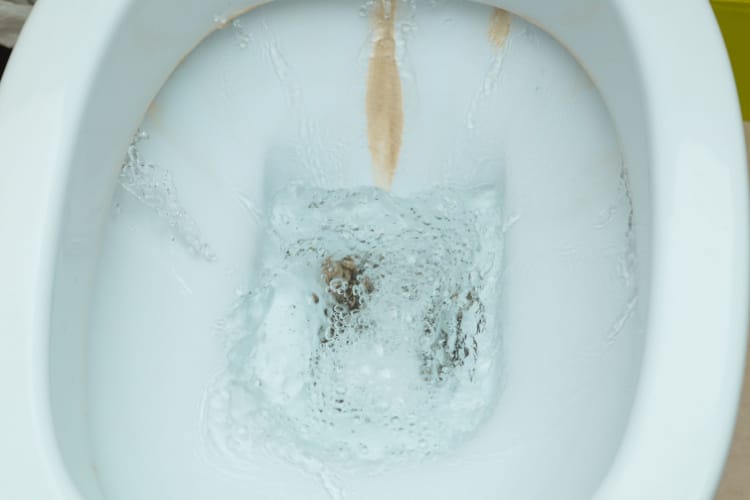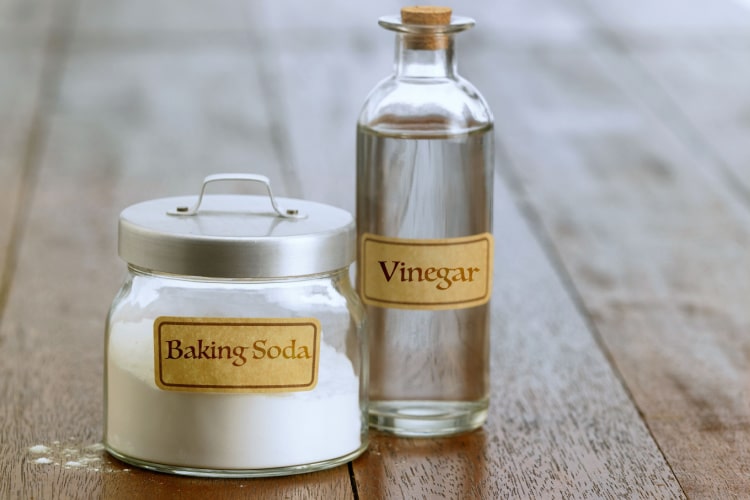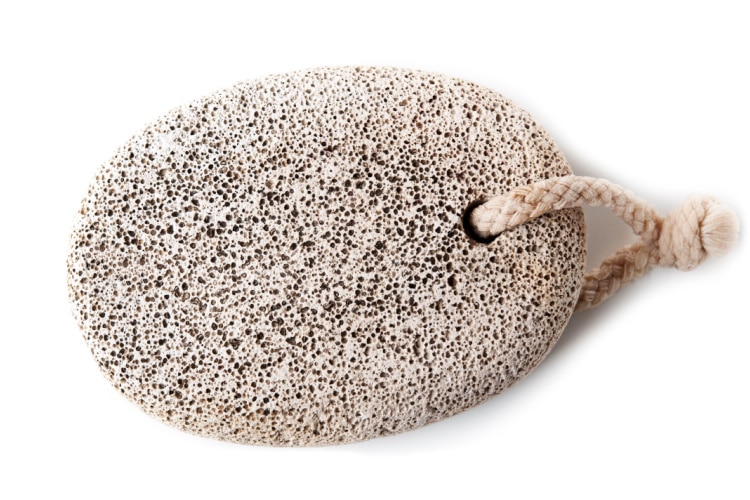Calcium and magnesium hard water molecules leaves white, cloudy stains on surfaces such as toilet bowl.
Fortunately, there are several easy ways to remove and prevent hard water stains on toilet, such as cleaning the toilet with a white vinegar and baking solution or using a pumice stone to scrub the toilet.

How to Remove Hard Water Stains From Toilet
Minerals are alkaline in essence, and more often than not, require acidic liquids to dislodge or remove them.
However, most cleaning agents with acidic properties have chemicals that can be toxic to the human health. There’s one exception to this rule and one non-acidic and non-liquid cleaning instrument:
- White vinegar (an acidic liquid), when combined with baking soda (an alkali compound), makes it the safest and most effective way of removing hard water stains.
- Pumice stone is another effective tool to remove hard water stains over sensitive surfaces like porcelain and ceramic.
1. White Vinegar and Baking Soda

The acidic nature of white vinegar makes it one of the best solutions to deal with the adverse effects of hard water. Its efficiency is so high that people also use it as a water-softening liquid in their washing machines, and it’s often the preferred way to sanitize water-softening devices.
Baking soda (NaHCO₃), on the other hand, is an alkaline compound, but when combined with acids, it produces a small amount of carbon dioxide through a chemical reaction. This reaction and the carbon dioxide it produces help oxidize a portion of the mineral buildup, making them easier to clean.
The combination of white vinegar and baking soda is also non-toxic and non-abrasive.
Here’s how to combine baking soda and white vinegar to remove hard water stains on toilet:
- Fill a cup with white vinegar and pour it inside the toilet bowl, making sure that it touches every stained spot
- Pick up your toilet brush and swish the vinegared water around
- Let the vinegar sit for about 5 minutes
- Fill a cup with baking soda and sprinkle it inside the toilet bowl
- Pour another cup of vinegar over the mixture
- Let the mixture sit and react for about 10 minutes. Don’t worry when the chemical reaction between vinegar and baking soda starts, it creates fizzing and foaming bubbles.
- Pick up the toilet brush and swish the mixture thoroughly, covering all the stains
- Let it sit for 20 to 30 minutes
- After 20 to 30 minutes, brush the toilet bowl
- Flush
- If stubborn stains are left behind, repeat the process
2. Pumice Stone

Pumice stone is a natural by-product of mixing lava and water. It is mostly used to remove dead and dry skin, but can also be used to remove hard water stains on toilet.
How to use pumice stone to remove hard water stains:
- Pour warm water over the area you want to clean.
- Rub and scrub the stains with the pumice stone.
- Similar to the reaction between vinegar and baking soda, rubbing pumice stone over minerals will create paste-like foam. Don’t worry when you see it, as it only indicates that the stone is doing its job.
- Rinse the rubbed area, or simply flush the toilet.
- Repeat the sequence above if not all the stains are gone.
How to Protect Your Toilet Bowl from Hard Water Stains
The best way to protect your tiles from hard water stains is to find a permanent solution to the calcium and magnesium minerals in your water. This would involve flushing out the minerals, and water softeners are the best tool for this.
Water softeners are water treatment systems made specially to remove hard water minerals and contaminants.
There are 3 types of water softeners:
- Salt-based water softener: Uses sodium or potassium chloride salt to separate the calcium and magnesium molecules in water through a process known as Ion-exchange. We recommend you to buy the Springwell SS1 Salt-Based Water Softener.
- Salt-free water softener: Uses Template Assisted Crystallization (TAC) to crystallize hard water minerals. We recommend you to buy the Kind Water Systems E-2000 Water Softener.
- Water Descaler: Uses electromagnetic pulses to prevent calcium and magnesium molecules from binding with water molecules.